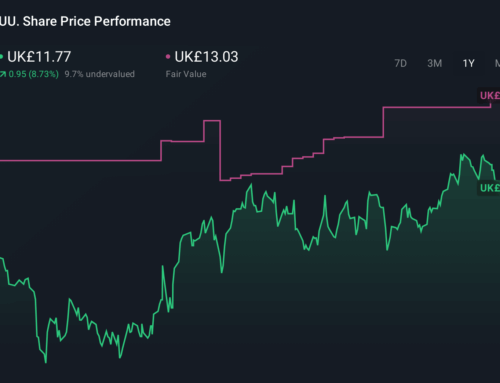Best Cryptos To Invest In Today: Qubetics, Ethereum, And Tron – Latest Updates & Predictio
April 16, 2025
The crypto world is buzzing right now, with new opportunities emerging all around. As 2025 unfolds, a few coins are stepping up to the plate — and they’re not just about flashy promises. Qubetics, Ethereum, and Tron are making strides, but each one is bringing something unique to the table that could change the crypto landscape forever. With blockchain adoption surging, these coins are right at the center of the action.
Ethereum, long a pillar of the decentralized finance (DeFi) ecosystem, is pushing the boundaries of scalability and security. Tron, known for its lightning-fast transactions and zero-fee structure, continues to make waves in the entertainment and gaming sectors. But don’t overlook Qubetics. A newcomer to the scene, it’s making its mark with a non-custodial multi-chain wallet that could solve blockchain interoperability issues — a significant roadblock for decentralized applications (dApps).
In this article, we’ll dive into what makes Qubetics, Ethereum, and Tron stand out. Whether you’re looking for scalability, low transaction costs, or groundbreaking new tech, these coins are likely to be top contenders in 2025. Read on for a breakdown of the latest updates and why they might just be the best cryptos to invest in today.
Let’s talk about Qubetics — it’s not just another blockchain project. Its focus on interoperability sets it apart, solving one of the most critical issues facing the blockchain space. With so many blockchain networks out there, they often operate in isolation and are unable to communicate with each other. This siloed approach limits the true potential of decentralized finance, and that’s where Qubetics comes in.
Qubetics is designed to connect different blockchains and enable seamless interactions. Through its non-custodial multi-chain wallet, Qubetics allows users to store and trade digital assets across different networks with ease. No more jumping between wallets and platforms. Everything you need is in one place, making it perfect for both businesses and individual users.
Qubetics’ best crypto presale is in its 30th stage, and it’s already generating serious attention. With over 508 million tokens sold and over $16.1 million raised, Qubetics is clearly on the radar of crypto enthusiasts. The current price of $TICS tokens is $0.1729, and the presale is far from over.
What’s even more exciting are the predictions analysts have made. After the presale, if the price of $TICS hits $1, that’s a 477% return on investment (ROI). The projected ROI climbs even higher post-mainnet launch, with $TICS potentially reaching as much as $15, offering a staggering 8567% ROI. For anyone looking for a project with real potential, Qubetics is definitely worth keeping an eye on.
Recently, Qubetics has secured several key partnerships that are expected to accelerate its vision of blockchain interoperability. Adding a decentralized VPN (dVPN) and advanced wallet features, including debit card and virtual card integration, are just the tip of the iceberg. As these technologies continue to evolve, Qubetics is positioning itself as a game-changer for businesses and individuals looking to interact with blockchain ecosystems without the usual friction.
Ethereum miners are facing increased costs due to the recent tariffs imposed on Chinese-manufactured ASICs, a challenge that mirrors the situation for Bitcoin miners. These rising equipment prices could potentially affect network security and the overall mining incentives, as miners may struggle to maintain profitability under these new conditions.
However, Ethereum’s inclusion in the U.S. Strategic Bitcoin Reserve is a significant development that boosts its credibility in the eyes of institutional investors. This move could pave the way for greater institutional adoption of Ethereum, enhancing its long-term potential despite the immediate mining challenges.
Tron is nearing a significant milestone, with its USDT transactions approaching $70 billion. This achievement reflects the increasing adoption and utility of the TRON network for stablecoin transactions, crucial for traders considering market liquidity and network scalability.
TRX has recently broken through a key resistance level, signaling potential for further price appreciation. On-chain data suggests a bullish outlook, with analysts predicting that TRX could reach $0.40 in the near term, contingent on sustained market momentum.
A non-custodial wallet is one where you control the keys to your assets — no third party is in control. This is essential for users who want complete ownership of their crypto. A multi-chain wallet, on the other hand, allows users to manage different digital assets across various blockchains in one place. This is crucial in a multi-blockchain world, where assets must move freely between networks.
Qubetics’ non-custodial multi-chain wallet is designed to simplify the complex world of digital asset management. By supporting multiple blockchains, users can easily store, send, and receive assets from different networks without relying on centralized exchanges or platforms. This technology enables businesses to transact seamlessly across various ecosystems, making it a valuable tool for crypto professionals and enthusiasts alike.
As blockchain adoption grows, the need for tools that enable interoperability and streamline digital asset management becomes even more pressing. Non-custodial multi-chain wallets give users more control and flexibility, allowing them to access a wide range of digital assets without being limited by a single blockchain. In short, they offer the freedom and security that’s essential for the future of decentralized finance.
Qubetics, Ethereum, and Tron are three of the best cryptos to invest in today, each offering something unique. Whether it’s Qubetics’ non-custodial multi-chain wallet solving blockchain interoperability issues, Ethereum’s scaling solutions through Ethereum 2.0, or Tron’s lightning-fast transactions and low fees, these projects are pushing the boundaries of what blockchain can do.
As 2025 unfolds, these coins are bound to continue making waves, and for anyone looking to explore the future of crypto, they’re the ones to watch. Don’t miss out on these game-changing projects — keep an eye on them and take advantage of their potential.
- Qubetics: https://qubetics.com
- Presale: https://buy.qubetics.com
- Telegram: https://t.me/qubetics
- Twitter: https://x.com/qubetics
1. What makes Qubetics stand out in the crypto space?
Qubetics stands out with its focus on blockchain interoperability, offering a non-custodial multi-chain wallet that connects different blockchain networks.
2. How is Ethereum improving its scalability?
Ethereum is moving to Ethereum 2.0, transitioning to proof-of-stake (PoS), which will reduce fees and increase transaction speeds.
3. Why is Tron popular among content creators?
Tron offers fast transactions with zero fees, making it an ideal blockchain for digital content creators who want to monetize their work.
4. What is a non-custodial multi-chain wallet?
A non-custodial multi-chain wallet lets users store and manage digital assets across multiple blockchains while maintaining full control over their keys.
5. How does Tron contribute to decentralized finance (DeFi)?
Tron supports a growing DeFi ecosystem, offering low-cost, scalable solutions for users and developers alike.
Search
RECENT PRESS RELEASES
Related Post




